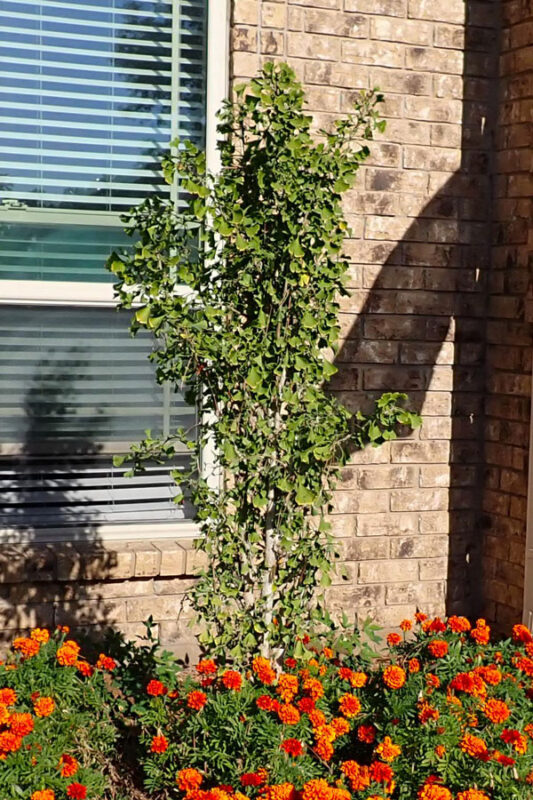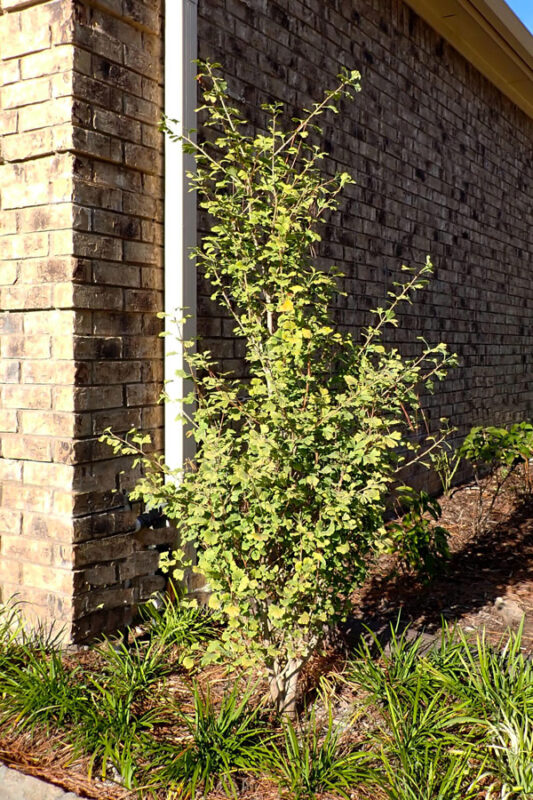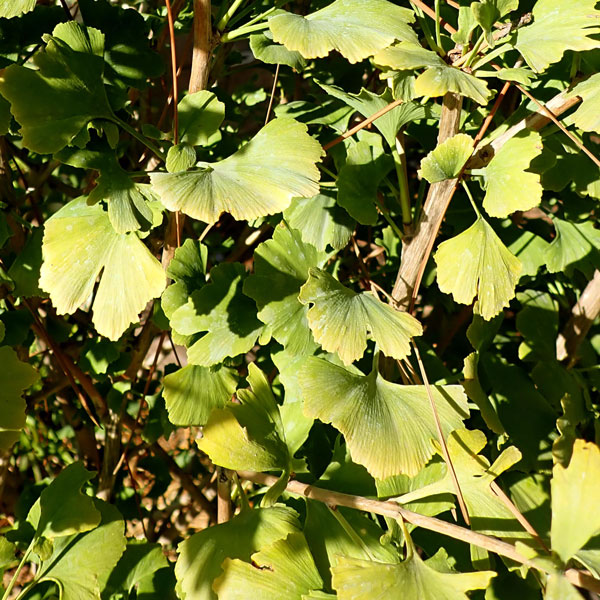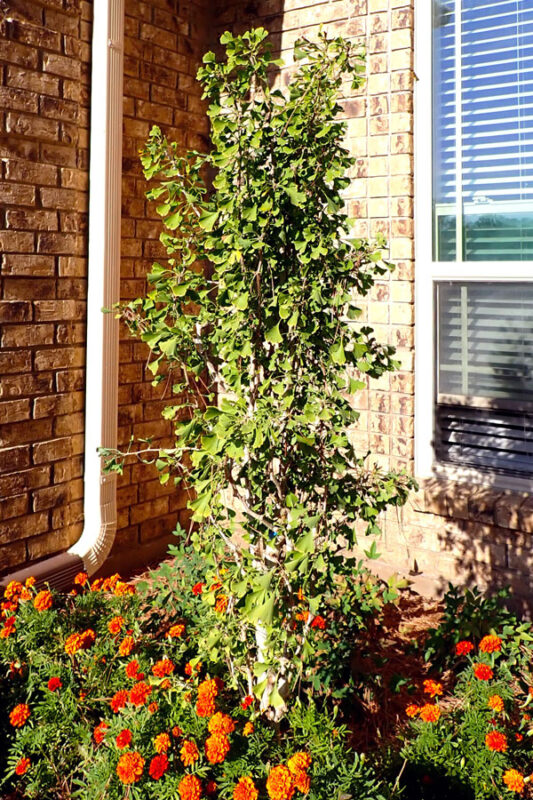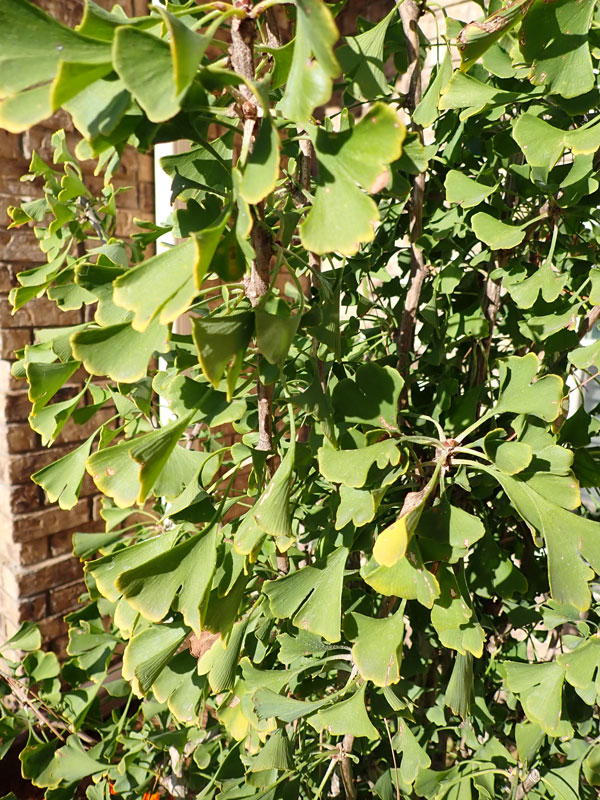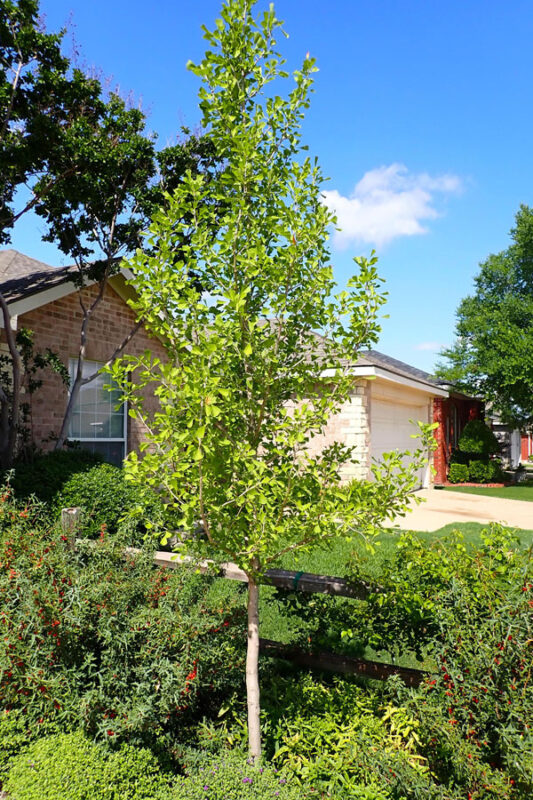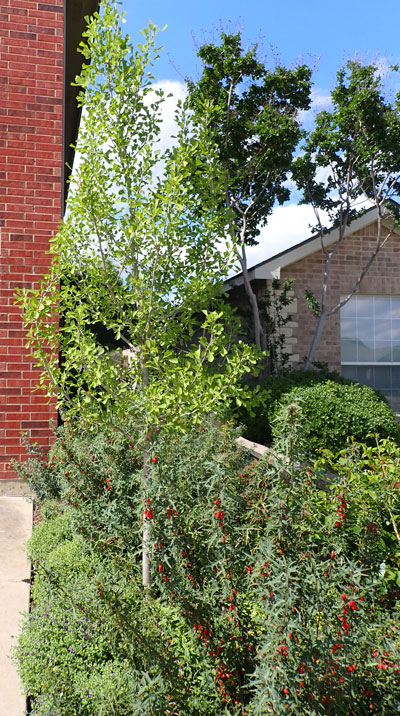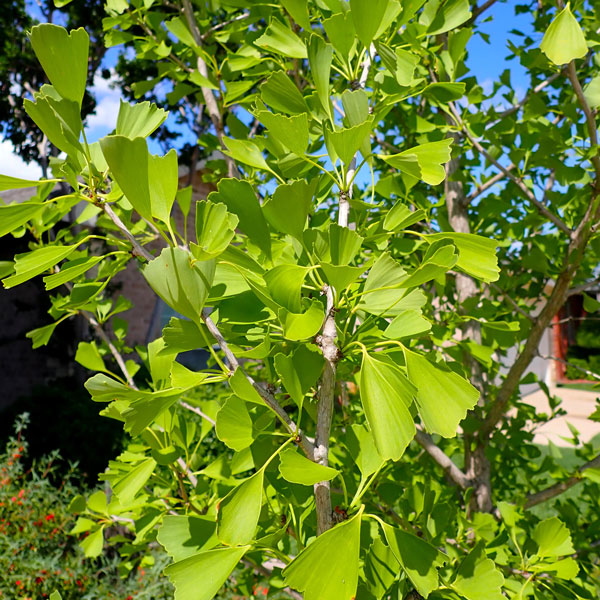Gung ho about ginkgoes – by Steve Huddleston
In perfect world settings ginkgo trees can reach 50 to 80 ft. in height and 30 to 40 ft. in width. That doesn’t happen here in Texas very often, and when it does it’s usually in the soils and climate of the eastern part of our state.
What you’ll want to know about ginkgoes…
Siri tells us that either “ginkgos” or “ginkgoes” is an acceptable spelling of the plural form of this plant, but since the spelling without the “e” sets off the alarm bells and whistles of “spell check” we’ll add in the “e.”
• Scientific name: Ginkgo biloba (many cultivars exist)
• Common name: Ginkgo or maidenhair tree (referring to the similarity in leaf shape between ginkgoes and maidenhair ferns)
• Plant Family: Only member of the Ginkgoaceae Family
• Rate of growth: In Texas, slow
• Sun or shade: Prefers full sun but will tolerate partial shade – symmetry may be lost if grown near other trees
• Growth habits: Species and some cultivars are V-shaped with upward- and outward-extending branches. Other cultivars are more narrow and upright but still with V-shaped branching. Some cultivars are decidedly dwarf and well suited to smaller urban settings.
• Evergreen or deciduous: Deciduous with exceptional gold fall color
• Flowers or fruit: Flowers are not attractive; fruit produced only on female plants – has a putrid odor when ripe. You will want to plant only grafted male (therefore, fruitless) selections.
• Native home: China
• Hardiness Zone: USDA Zones 3-8
• Adapts well to urban conditions
• Tolerates deer, clay soils, and air pollution
• Very few pest problems
‘Menhir’ is a male cultivar developed in the Netherlands. It has a conical shape and grows 10 ft. tall and 3 ft. wide, making it perfect for the corner of a house. The foliage is smaller than that of the species.
‘Robbie’s Twist’ is a narrow, upright male cultivar growing 8 ft. tall and 6 ft. wide. It has a contorted growth habit and narrow, fan-shaped leaves.
‘Saratoga’ has an oval shape and will reach a mature size of 30 ft. tall and 15 ft. wide after 10 to 20 years. The leaves are elongated and pendulous and resemble foliage of fishtail palms.
Thursday note from Neil: Knowing some of you will want to know sources of these unusual ginkgoes, I checked with Steve this morning. He says he bought all of these from Metro Maples in Fort Worth (https://www.metromaples.com/).

